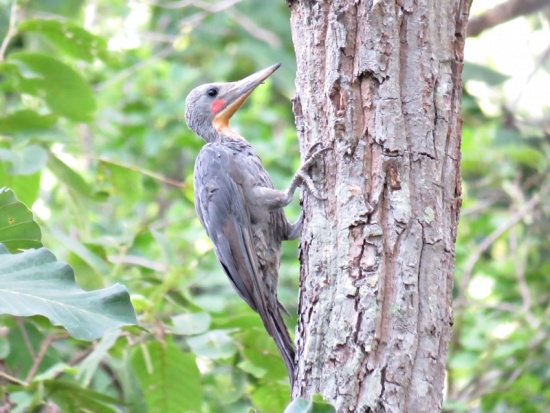(→External Links: New combined GSearch. GSearch checked template) |
(taxon, refs) |
||
| Line 19: | Line 19: | ||
====Subspecies==== | ====Subspecies==== | ||
There are 2 subspecies<sup>[[#References|[1]]]</sup>: | There are 2 subspecies<sup>[[#References|[1]]]</sup>: | ||
| + | *''M. p. mohun'': | ||
| + | :*Northern [[India]] and [[Nepal]] to northern Arunachal Pradesh | ||
*''M. p. harterti'': | *''M. p. harterti'': | ||
| − | :* | + | :*Northeeast [[India]] south of the Brahmaputra River to northern [[Myanmar]], south-western [[China]] and [[Indochina]] |
*''M. p. pulverulentus'': | *''M. p. pulverulentus'': | ||
:*[[Malay Peninsula]] to [[Borneo]], [[Sumatra]], [[Java]], Balabac and Palawan | :*[[Malay Peninsula]] to [[Borneo]], [[Sumatra]], [[Java]], Balabac and Palawan | ||
| Line 29: | Line 31: | ||
Their diet consists mostly of insects (ants, termites, beetle larva and bees). Possibly fruit is eaten too. | Their diet consists mostly of insects (ants, termites, beetle larva and bees). Possibly fruit is eaten too. | ||
==References== | ==References== | ||
| − | #{{Ref- | + | #{{Ref-Clements6thOct23}}#{{Ref-GillDonskerRasmussen22V13.2}}#Avibase |
#Handbook of the Birds of the World Alive (retrieved September 2015) | #Handbook of the Birds of the World Alive (retrieved September 2015) | ||
{{ref}} | {{ref}} | ||
Latest revision as of 01:34, 6 July 2024
- Mulleripicus pulverulentus
Identification
About 50 cm (19¾ in) Large size should be noticable.
- Long bill, neck and tail
Male
- Pale red cheek patch
- Cream throat
Distribution
Asia, China, Tibet, Nepal, India, Bangladesh, Bhutan
Southeast Asia:
Indochina, Myanmar, Laos, Vietnam, Cambodia, Thailand, Malaysia, Borneo, Malay Peninsula, Brunei, Singapore, Philippines, Borneo, Indonesia, Greater Sundas, Sumatra, Java and Bali
Widespread in the Oriental mainland and islands.
Taxonomy
Subspecies
There are 2 subspecies[1]:
- M. p. mohun:
- M. p. harterti:
- M. p. pulverulentus:
- Malay Peninsula to Borneo, Sumatra, Java, Balabac and Palawan
Habitat
Moist deciduous and tropical evergreen forests and nearby secondary forests.
Behaviour
Diet
Their diet consists mostly of insects (ants, termites, beetle larva and bees). Possibly fruit is eaten too.
References
- Clements, J. F., P. C. Rasmussen, T. S. Schulenberg, M. J. Iliff, T. A. Fredericks, J. A. Gerbracht, D. Lepage, A. Spencer, S. M. Billerman, B. L. Sullivan, and C. L. Wood. 2023. The eBird/Clements checklist of Birds of the World: v2023. Downloaded from https://www.birds.cornell.edu/clementschecklist/download/
- Gill, F, D Donsker, and P Rasmussen (Eds). 2023. IOC World Bird List (v 13.2). Doi 10.14344/IOC.ML.13.2. http://www.worldbirdnames.org/
- Avibase
- Handbook of the Birds of the World Alive (retrieved September 2015)
Recommended Citation
- BirdForum Opus contributors. (2025) Great Slaty Woodpecker. In: BirdForum, the forum for wild birds and birding. Retrieved 28 April 2025 from https://www.birdforum.net/opus/Great_Slaty_Woodpecker
External Links
GSearch checked for 2020 platform.1





